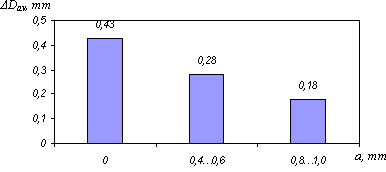Improvement of manufacturing welded petrochemical apparatuses by application of vibrating processing in welding
Improvement of manufacturing welded petrochemical apparatuses by application of vibrating processing in welding
During manufacturing of welding shells of petrochemical devices it is possible that there is an occurrence of undesirable residual stress and deformations in main details and welding joints which result the distortion of the form of details and decrease(reduction) of corrosion resistance of devices [1 - 2].
As factory floor experience and researches show, occurrence and accumulation of form discrepancy of base details of shell devices occur at various technological process stages of manufacturing. Errors of the form result to increase of labour-intensiveness of assembling - welding operations, local increase in zones of concentration of mechanical stresses when operational loadings are applied. Emerged geometrical errors are difficult to remove because in this case application of significant deforming forcing is needed which, in turn, result in decrease of a stock of plasticity of metal.
To reduce residual stresses in elements of petrochemical devices shells the thermal processing is widely applied now. But this technological operation is energy- and labour-intensive and it is not always possible to apply it during manufacturing and assembling of details.
One of perspective methods of removal of residual stresses is vibration processing which is easy to realize and demand no complex equipment and significant input of energy.
Today there are many well-known literary references which contain results of researches of vibration processing influence on reduction of residual stresses after welding. But the data on vibration processing use during performance of welding are almost absent. Reference [3] concerns works on this theme.
In present article there are results of research of vibration processing influence, used during manual electric arc welding, on increase of stability of the form of welded products, mechanical properties and a microstructure of received welding joints.
The range of allowable amplitudes of vibration of welding details has preliminary been determined. It has experimentally been established, that amplitudes of vibration up to 1 mm allow receiving visually high-quality weld seam.
Further influence of amplitude of accompanying vibration on stability of the form of a received welded product has been investigated. For this purpose diametrical steel plates with 2 mm thickness has been welded to tube samples with outside diameter 219 mm and wall thickness 3 mm at three values of amplitude of vibration: 0; 0,4…0,6; 0,8…1,0 mm. After performance of welding with accompanying vibration processing, measurements of diameters of samples have been have been carried out. Results of researches are given on fig. It is clear from it that with increase in amplitude of vibration the size of average diameters discrepancy of tube samples noticeably decreases. This shows noticeably decrease residual stresses value.
 | ||||
| ||||
Fig. 1. The diagram of dependence of average diameters discrepancy of samples DDav from amplitude value of vibration a during welding.